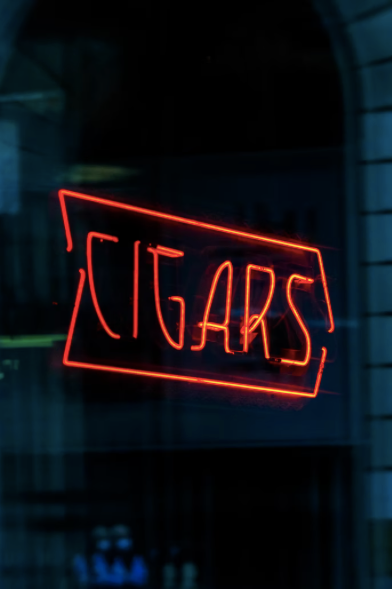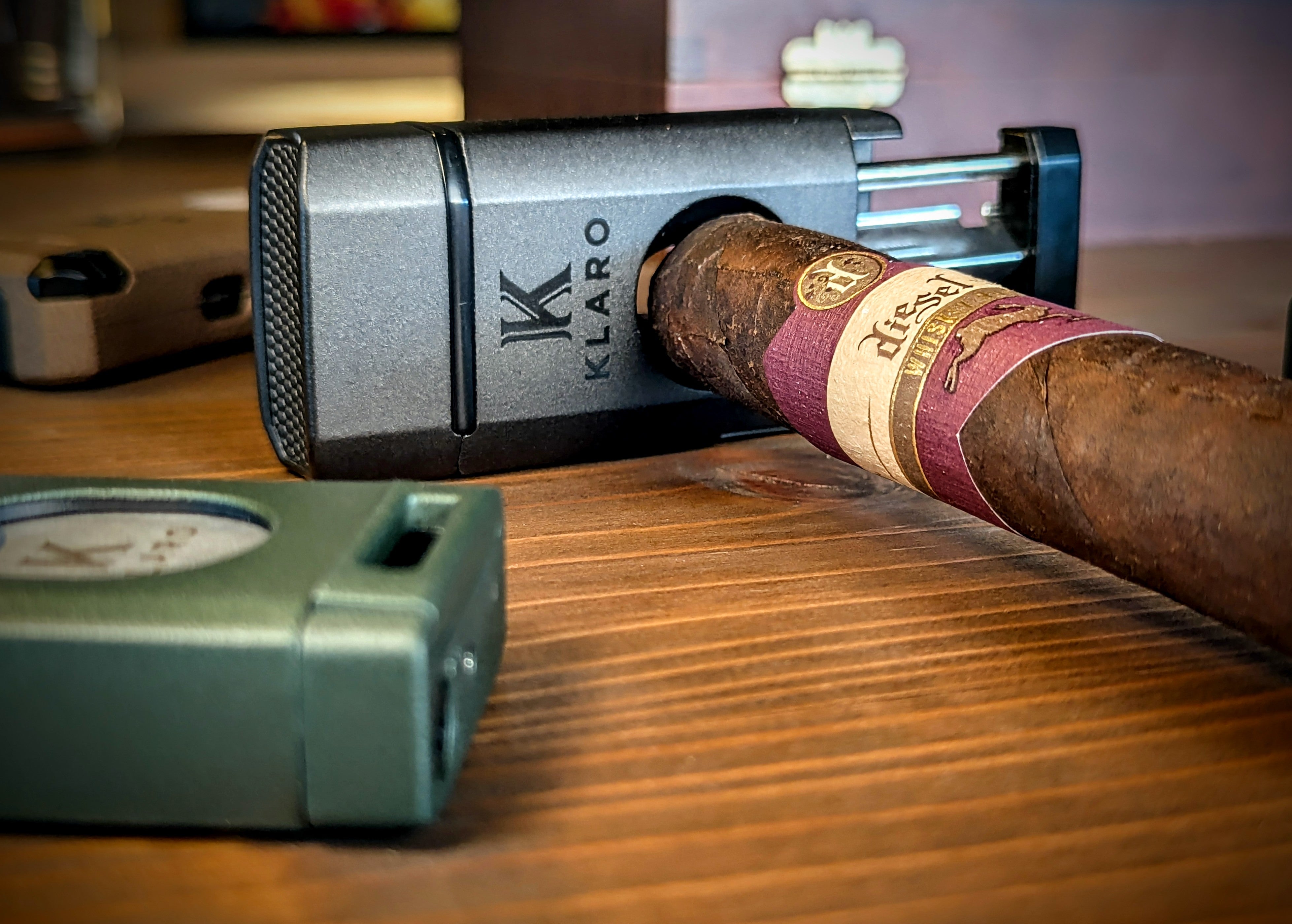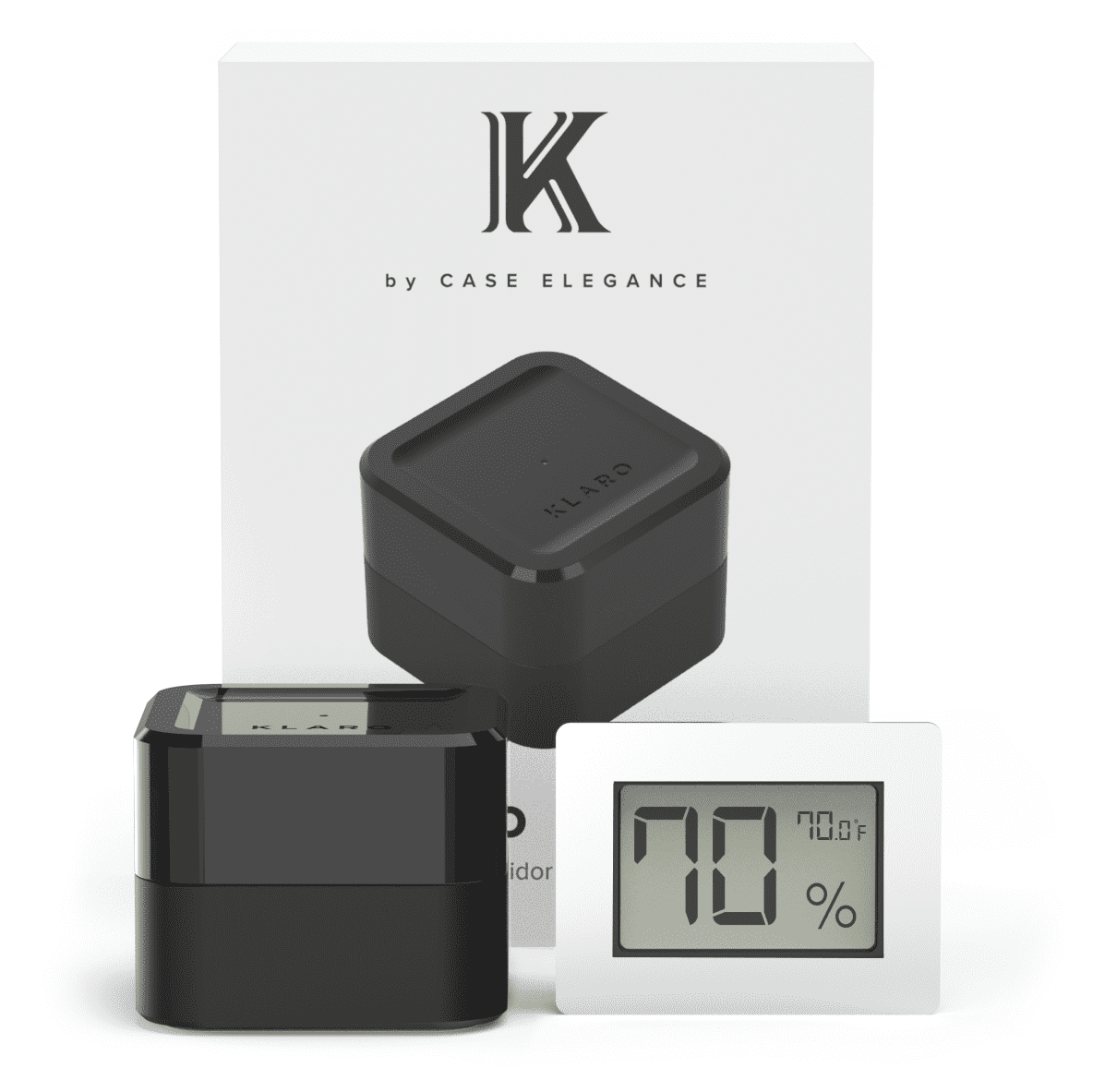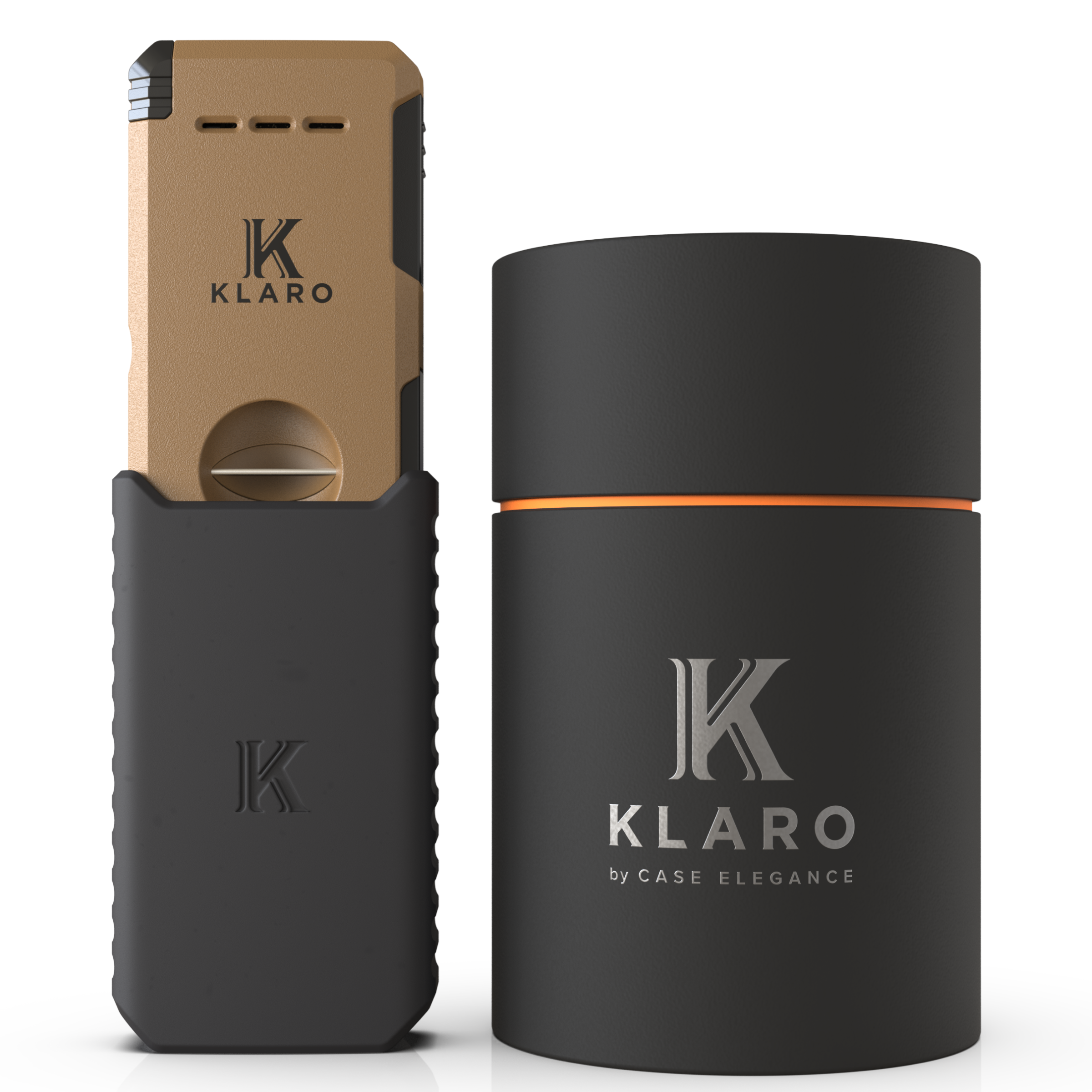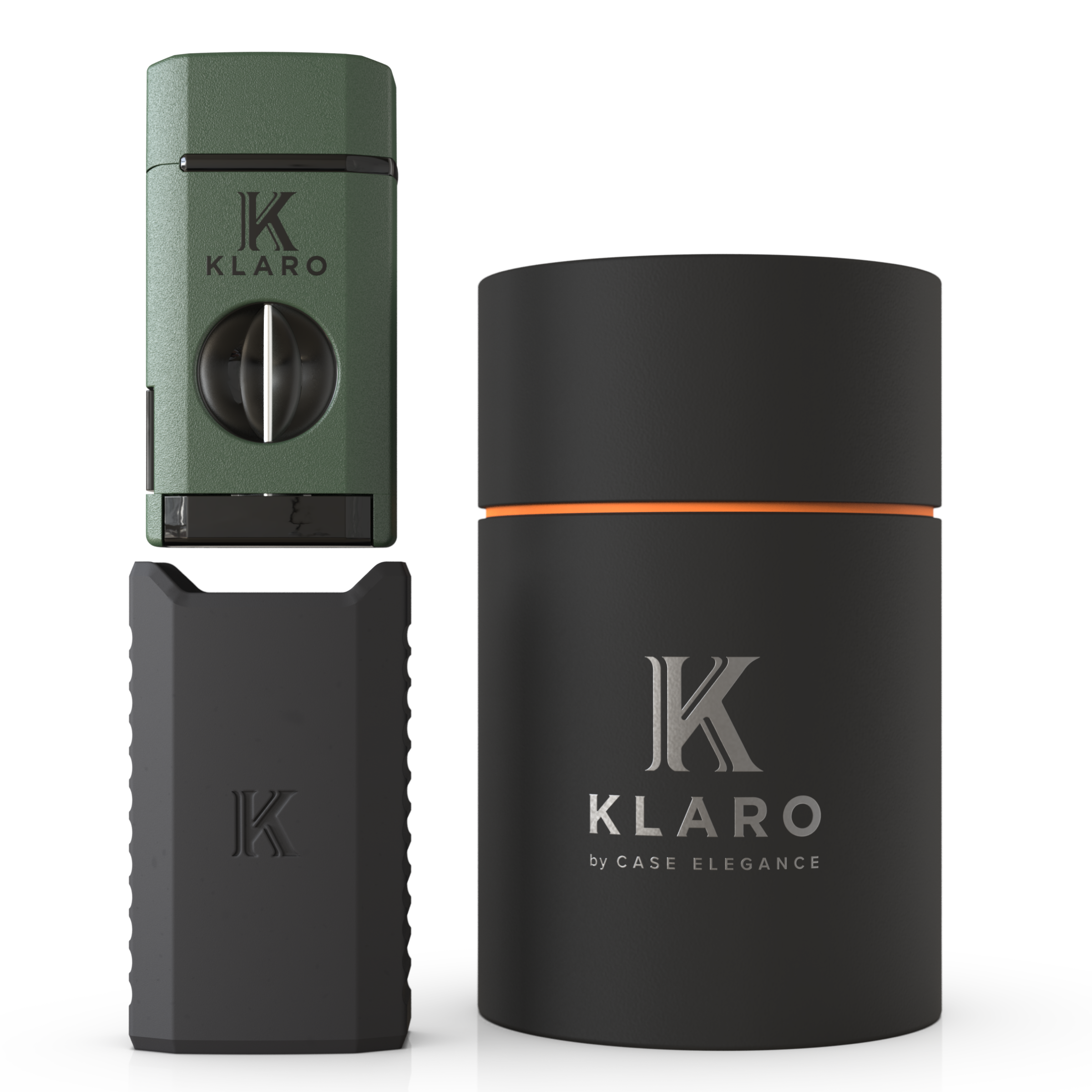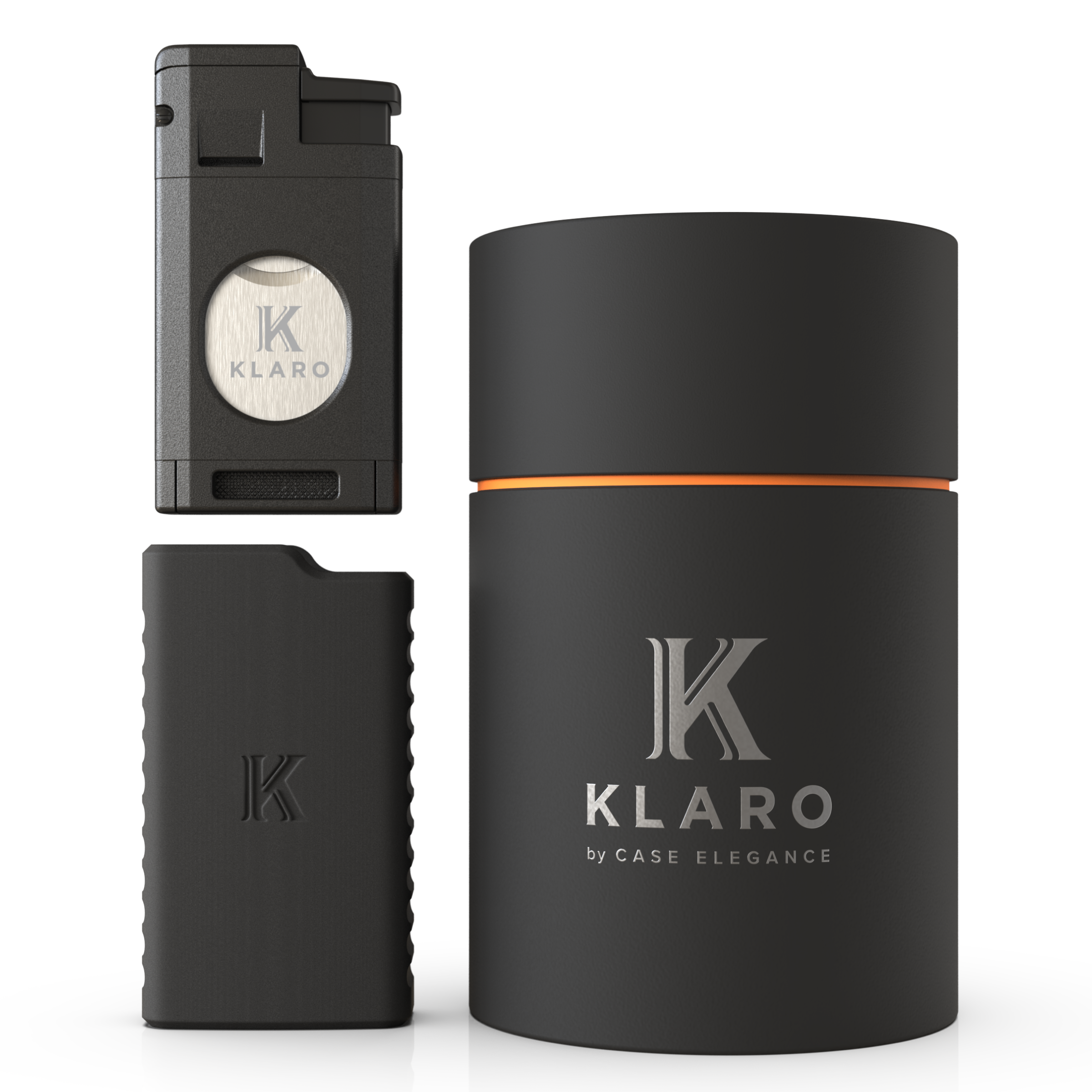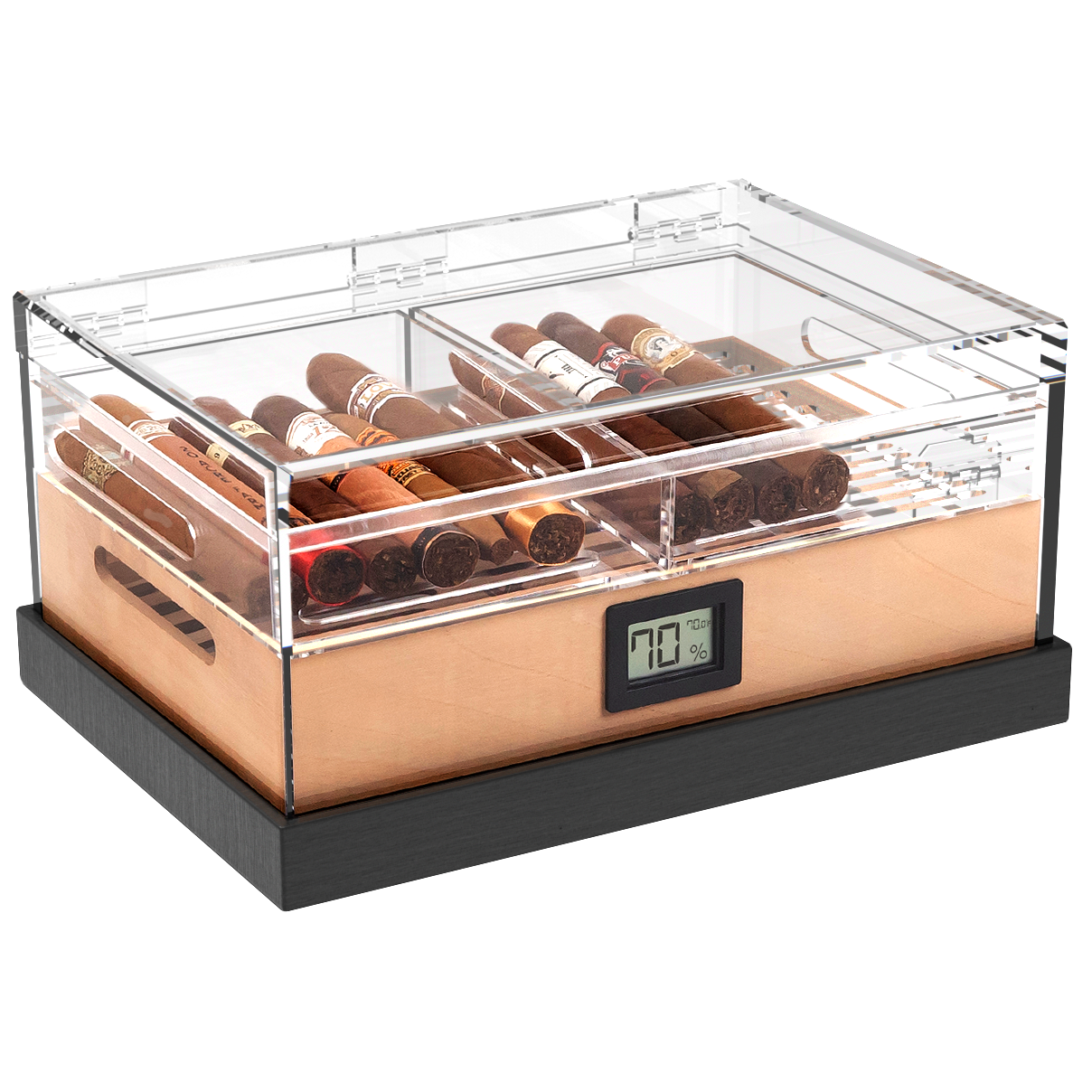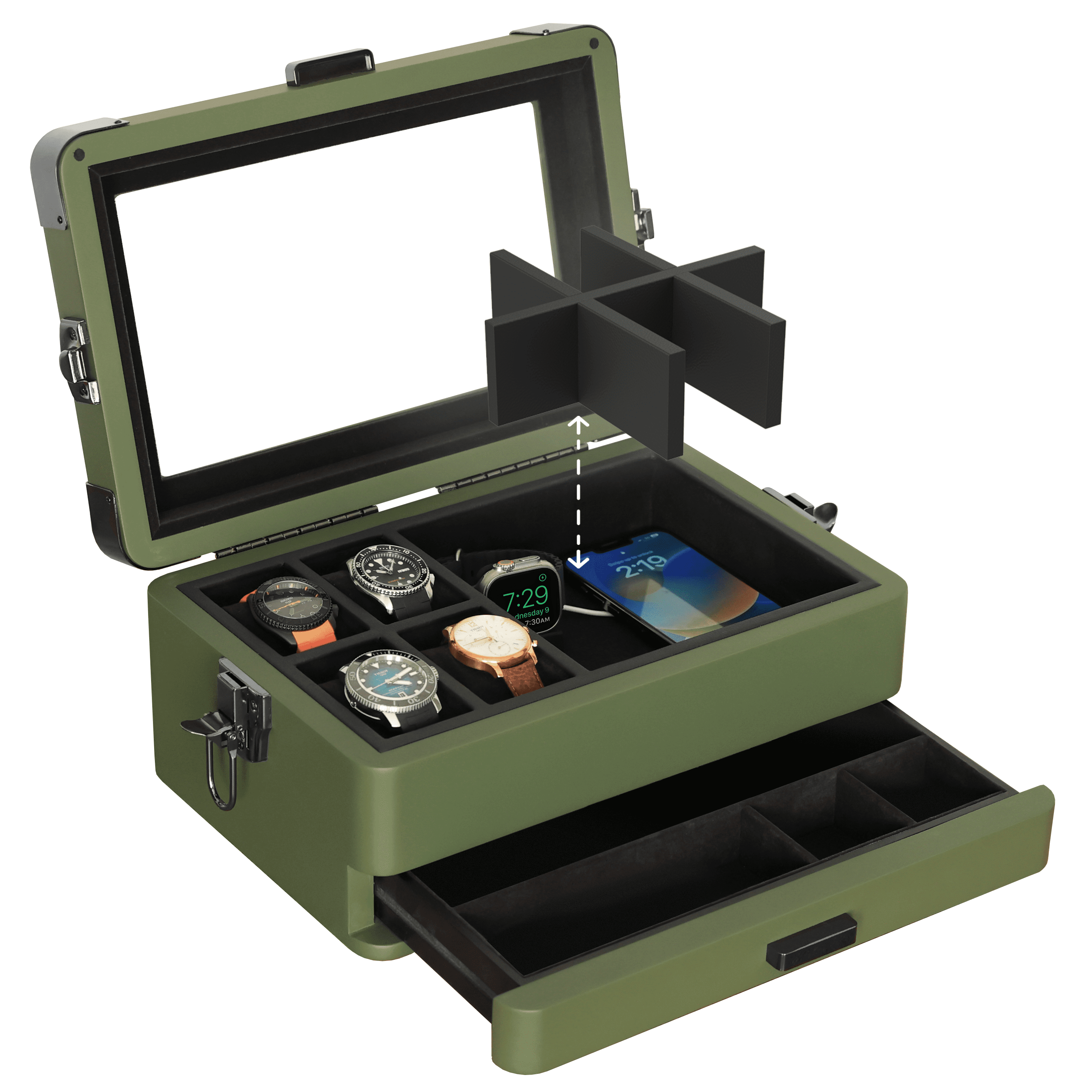- - Torch lighters and specialized cigar cutters are the two most important accessories you own.
- - Different torch lighters serve different purposes, but all should help foster an even burn.
- - Cutters vary in versatility and specialization — it's not bad to own several.
Too often, good cigars get ruined at the hands of the uninitiated. Too often, perfectly fine cigars get a bad rap because someone didn't know what they were doing. And too often we blame the type, brand, or tobacco instead of user error.
You — the smoker — are responsible for a lot of how well a cigar smokes. How you've stored or aged the cigar, how you draw on the cigar, too hard or light, how you cut and light a cigar...
Here we’ll dial-in those last two factors: cut and light. With a bit of know-how and the right tools — in this case, your cutter and torch lighter — you can achieve the best experience each cigar you smoke has to offer.
Types of Torch Lighters
Cigars offer a larger lighting surface than other forms of smoking tobacco, and that invites potential issues.
Tobacco leaves are rolled into shape, so the lighting surface must be lit thoroughly and evenly so the different leaves smoke at the same rate. Otherwise, your cigar can experience tunneling or canoeing, which occurs when some tobacco burns more quickly, forming a tunnel or canoe shape of burned-out tobacco.
Torch lighters are the best tool to create this burn.
Torch lighters are the most popular means of lighting cigars. Pressurized butane creates a consistent, ultra-hot flame when lit so cigar smokers can evenly spread the heat onto the tip of the cigar. There are several types of torch lighters, and there are other methods to light cigars beyond torch lighters.
Single Jet
This type of torch lighter produces a single jet of flame. This allows more acute control, and cigar smokers often use a single jet to “spot light” their cigar when one area isn’t burning as consistently as the others.
Somewhat unexpectedly, single jet torch lighters are the preferred tool for many when they smoke especially large ring gauge cigars. With a single jet, one can control how the surface of the cigar is being lit.
Double Jet
Multi-jet torch lighters allow you to light more surface of the cigar at once. This can help achieve a more even burn and will reduce the likelihood of you lighting only one portion of the cigar.
As you’re lighting, be sure to stop and inspect the cherry to see if one side is lighting more than the other.
Triple, Quadruple Jet
The more jets to your lighter, the more surface area you can burn — and hopefully with more evenness. With lighters of this size, however, you can expect to burn far more butane. And many would argue that the return isn’t worth the likelihood of running out of fuel while on-the-go, or the need to refill constantly.
A bad light — which is often an uneven light–not only leads to a frustrating smoke, but it will affect how long the cigar will last, and it can change the quality of smoke it produces. Smoke will behave differently as the canoeing and tunneling worsen as you continue to smoke an unevenly lit cigar, and this will gradually affect the taste and the amount of smoke you’re getting with each drag.
Types of Cigar Cutters
The access point you create by cutting a cigar allows the mechanism of the draw: Your cigar wouldn’t smoke without creating a way for air to move through the layers of tobacco, fueling the cherry and transporting the smoke. So the cut you make can affect how well the cigar smokes.
There are four main types of cutters available today: straight, punch, wedge, and Shuriken — with the unique Shuriken being the most recent addition. Each type alters the experience slightly, offering different pros and cons for certain cigar types, and you should use your cutter based on the type of cigar you’re smoking and your preference.
Straight Cutter
The straight cutter is the most common type of cutter. It comes in a single-blade guillotine style or as a double-blade style. More often than not, enthusiasts generally prefer the latter, as there's less chance of damage to the cigar.
A double blade creates the cleanest, most precise cut without risking tearing the tobacco, which is more likely with a single-blade style.
With straight cutters, you determine the size of the cut. Which is why this type can create the most problems should you cut a size too wide or too shallow.
Punch Cutter
The punch cutter is a circular blade that cuts out a small cylinder of tobacco from the head and cap, creating an open passageway for smoke to come through. This allows for a fuller draw.
Punch cutters help eliminate tobacco debris. They essentially drill instead of chop the tobacco, making a clean cut that won't leave flecks in your mouth. And, with punch cutters, you won't have to worry about cutting too far up into the cigar. It's hard to mess this up.
The size of the hole, however, can be an issue, and this is the well-known downside of using a punch cutter.
Wedge Cutter
A wedge cutter, or v-cutter, uses a bent-shaped blade to cut a narrow divot in your cigar. This makes for a cleaner cut and reduces or eliminates tobacco debris. Cut too deep, and your cigar burns too hot with this cut. Ensure you get a sharp tool to avoid crushing the tobacco instead of slicing through it.
Shuriken Cutter
The Shuriken cutter creates six angled cuts along the perimeter of the cigar, forming a star shape and creating multiple openings for the smoke.
The razor-thin cuts are slight so you preserve the shape of the uncut cigar. But, because of this, you may struggle to get a good draw. The low-impact design and small cut sizes in the cigar can restrict how much smoke gets through. You may have to put pressure at the cut end to free up the tobacco and get a fuller draw.
How to use a cigar cutter and lighter

Keep several types of cutters or torch lighters on hand. Some will work better than others in different situations. Large humidors often include a drawer for cigar accessories, and you should keep a few types and back-ups ready.
Here are a few guidelines for any cutter or torch lighter to ensure the best possible smoking experience.
- Keep your cutter sharp. If your cutter is especially dull, you’ll damage cigars. Use rolled up paper to test.
- Make your light count. Don't try to light a cigar when your fuel is low. If it’s windy, don’t begin lighting until you find shelter.
-
Cut conservatively. You can always cut more. You can’t undo a cut. If your cigar hasn’t been stored in a good humidor, lightly moisten the cutting surface to prevent unwanted cracking.
- Visually inspect the end of the cigar after lighting to ensure an even burn across. Spot light where needed.
Keep your cutter and lighter together to ensure you always have the right tools. We love combinations like the Xikar Tactical Bundle Pack to keep a consistent aesthetic with great tools.
Another favorite is the Klaro gunmetal finish cigar cutter and torch lighter combo.
Where should I cut cigars?
One of the most common ways you can ruin a cigar is by cutting too far into the shoulder. Worse case, you can cut into the wrapper and cause the entire cigar to unravel. But even a mildly high cut can affect the draw, affecting how the rest of the cigar smokes.
The cut you make dictates the draw of the cigar in two ways. It affects the actual amount of smoke that’s created and comes through — the intake — and it affects the draw on the tobacco on the other end, how the tobacco burns. So when you make a cut that creates to loose of a draw, the tobacco burns hotter and scorches, ruining the flavor.
Conversely, if you make too small of a cut, the draw will be too hard, and you won't be able to keep the tobacco burning or taste the full flavors available.
So, where to cut?
Identify the seam that separates the cigar cap from the wrapper. You will often see a change in the color of the tobacco at the head, where it rounds or narrows. That seam is where the cap folds over and connects to the wrapper. Cut above the seam, and you cut into the wrapper — which will unravel... Cut just below the seam, and you'll maintain the structural integrity of the cigar.

Why does my torch lighter sputter?
If you’re experiencing an uneven burn when lighting cigars, it might not just be the type of torch lighter that’s wrong. Common torch lighter problems include:
- Not enough butane fuel
- The fuel is old
- Air is in the tank
- The butane is compromised
- The torch head is dirty
- You’ve overfilled your lighter.
Cutting and lighting your cigar properly ensures you don't ruin cigars, and it allows you to appreciate the full complexity of their flavor. Obviously, there's more to it than cutting and lighting methods, but these go a long way.
To learn more about how to care for your cigars, including how humidors protect your cigars, check out our humidor guide for a full rundown. Or check out these other resources:
- - How To Cut A Cigar Without A Cutter
- - How to Use A Humidor
- - How Long Do Cigars Last In An Electric Cigar Humidor?







